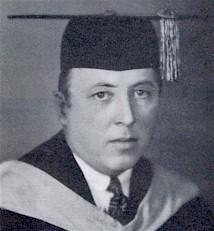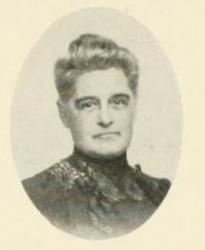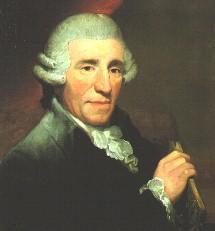Planning worship?
Check out our sister site, ZeteoSearch.org,
for 20+ additional resources related to your search.
- |
User Links
Person Results
‹ Return to hymnal





Export as CSV
Earl Marlatt

1892 - 1976 Person Name: Earl Marlatt, 1892- Hymnal Number: 70 Author of ""Are Ye Able," Said the Master" in The Chapbook Marlatt, Earl Bowman. (Columbus, Indiana, May 24, 1892--June 13, 1976, Winchester, Ind.). One of twin boys, he was born into the family of a Methodist Episcopal minister at Columbus, Ind. Graduating from DePauw University, Phi Beta Kappa, in 1912, he continued his studies at Harvard and Boston Universities, Oxford, England, and the University of Berlin. Upon returning to America he spent one year in newspaper work at Kenosha, Wisconsin, and then joined the United States Army, serving as a second lieutenant of field artillery in World War I.
He joined the staff at Boston University as Associate Professor of Philosophy in 1923, becoming Professor two years later, was Professor of Literature, Boston University School of Theology, and Dean, 1938-1945. In 1946 he became Professor of Philosophy of Religion at Perkins School of Theology, Southern Methodist University, Dallas, Texas. Member of many learned societies, a poet of distinction, he won the Golden Flower at the May Day Poetry Tournament in Boston, 1925, and has been President of both the Boston Browning Society and the Boston Authors' Club. A writer of prose as well as verse he has contributed widely to American journals. Marlatt was closely associated with and was literary advisor to H. Augustine Smith who compiled a series of hymnals during the 1920s, most of which were for young people. He was associate editor of The American Student Hymnal, 1928, one of the Smith books, and for many years a member of the Executive Committee of the Hymn Society.
Sources: Who's Who in America; handbooks of various hymnals; personal acquaintance and correspondence.
--Robert G. McCutchan, DNAH Archives
Earl Marlatt
C. Harold Lowden
1883 - 1963 Person Name: C. Harold Lowden, 1883- Hymnal Number: 39 Composer of "GENEVA (Lowden)" in The Chapbook
C. Harold Lowden
Bliss Wiant
1895 - 1975 Hymnal Number: 92 Translator of "Grace" in The Chapbook Bliss Wiant (1895-1975) was educated at Wittenberg College and Ohio Wesleyan University (B.A. 1920), Boston University (M.A. 1936), and Peabody College (Ph.D. 1946). He also studied at Harvard University and Union Theological Seminary, New York City After ordination (1923), Wiant became head of the music department at Yenching University, Peking (1923-1951). He was pastor of St. Paul’s Church, Delaware, Ohio (1953-1955), then minister of music at Mahoning Methodist Church, Youngstown, Ohio. After serving with the Methodist Board of Education, he became director of music at Scarritt College.
--The Presbyterian Hymnal Companion, 1993
===============================
Letter from Mildred Bliss to Mary Louise VanDyke (8 January 1987) outlining activity in the 1960s and 1970s is available in the DNAH Archives.
Bliss Wiant
Mary S. Edgar
1889 - 1973 Hymnal Number: 39 Author of "God, Who Touchest Earth with Beauty" in The Chapbook
Mary S. Edgar
May P. Hoyt

1849 - 1923 Hymnal Number: 74 Author of "Here at Thy Table, Lord" in The Chapbook May (Mary) Pierpont Hoyt, born 1849 in South Avon, N.Y., daughter of Uriah Grandison Hoyt and Emma G. Pierpont. Her mother died in 1856 when she was 7 years old. She attended Oread Collegiate Institute in Worcester, Mass., a school for women, from 1862-1863. She then returned to Rochester, N.Y. and attended Livingston Park Seminary, another school for women. She graduated from Livingston and taught there for two years, and then taught for two years in the public schools. She later moved to Albany, living with a friend for twenty years until the friend remarried. she then lived at the Albany Hospital. She claims to have written two hymns appearing in "Church Hymnary" (edited by Edwin A. Bedell, published in 1900 by Maynard, Merrill & Co.) Nos. 736 and 985. #736 is "Here at Thy table, Lord" and #985 is "Though life be long and life be sad." She died in November 11, 1923 in Albany and was buried at Mount Hope Cemetery in Rochester, N.Y.
Dianne Shapiro, from History of the Oread Collegiate Institute, Worcester, Mass. (1849-1881): with biographical sketches" by Martha Burt Wright and Anne M. Bancroft (New Haven, Conn.: Tuttle, Morehouse & Taylor Co., 1905; Ancestry.com record for Uriah Grandison Hoyt, 1824-1901; and Find A Grave Memorial website (both accessed 3/19/2021)
===================
Hoyt, May Pierpont (late 19th century?). Disciple (?). Nothing is known of this writer except what can be inferred from the appearance of one hymn credited to this name, "Here at thy table, Lord, This sacred hour," a communion hymn written in the meter of, and printed with the tune of, "Break thou the bread of life," and apparently intended to supplant Lathbury's 1877 Bible hymn often used as if it were referring to the bread of the Lord's Supper. "Here at thy table" has been reported as early as 1889, and it has appeared quite generally in Disciple books since as early as 1905, but seldom in books of other denominations. --George Brandon, DNAH Archives
May P. Hoyt
Joseph Y. Peek
1843 - 1911 Person Name: Joseph Yates Peek Hymnal Number: 59 Composer of "PEEK" in The Chapbook
Joseph Y. Peek
Joseph Haydn

1732 - 1809 Person Name: Franz Joseph Haydn, 1732-1809 Hymnal Number: 43 Composer of "LYONS" in The Chapbook Franz Joseph Haydn (b. Rohrau, Austria, 1732; d. Vienna, Austria, 1809) Haydn's life was relatively uneventful, but his artistic legacy was truly astounding. He began his musical career as a choirboy in St. Stephen's Cathedral, Vienna, spent some years in that city making a precarious living as a music teacher and composer, and then served as music director for the Esterhazy family from 1761 to 1790. Haydn became a most productive and widely respected composer of symphonies, chamber music, and piano sonatas. In his retirement years he took two extended tours to England, which resulted in his "London" symphonies and (because of G. F. Handel's influence) in oratorios. Haydn's church music includes six great Masses and a few original hymn tunes. Hymnal editors have also arranged hymn tunes from various themes in Haydn's music.
Bert Polman
Joseph Haydn
George Croly

1780 - 1860 Person Name: George Croly, 1780-1860 Hymnal Number: 64 Author of "Spirit of God, Descend upon My Heart" in The Chapbook Croly, George, LL.D., born in Dublin, Aug. 17, 1780, and educated at the Dublin University (M.A. 1804, LL.D. 1831). After taking Holy Orders, he laboured in Ireland till about 1810, when he took up his residence in London, and devoted himself to literature. In 1835 he succeeded to the united benefices of St. Stephen's, Walbrook, and St. Benet Sherehog, retaining the same till his death, which occurred suddenly in the public street, Holborn, Nov. 24, 1860. His prose publications, in addition to contributions to Blackwood's Magazine, were numerous, and dealt with biographical, historical, and scriptural subjects. His hymns were given in his—
Psalms and Hymns for Public Worship. Written and compiled by the Rev. George Croly, LL.D. London Kendrick, 1854.
This collection contained 25 psalms, 50 hymns, and 6 poems. Of these 10 psalms, 12 hymns, and the 6 poems bear Dr. Croly's initial. The following have come into common use mainly through Windle's Collection:—
1. Be still, be still, impatient soul. Patience.
2. Behold me, Lord, and if thou find. Lent.
3. Lift up your heads, ye gates of light. Ascension.
4. Lord, who hast sought us out, unsought. Public Worship.
5. Teach us, O Lord, this day. Sunday.
6. Thou, Lord of mercy and of might. Lent.
All these date from 1854, with the exception of No. 6, which appeared in his Scenes from Scripture and other Poems, 1851.
-- John Julian, Dictionary of Hymnology (1907)
George Croly
Frederick C. Maker
1844 - 1927 Person Name: Frederick C. Maker, 1844-1927 Hymnal Number: 55 Composer of "ST. CHRISTOPHER (Maker)" in The Chapbook Frederick C. Maker (b. Bristol, England, August 6, 1844; d. January 1, 1927) received his early musical training as a chorister at Bristol Cathedral, England. He pursued a career as organist and choirmaster—most of it spent in Methodist and Congregational churches in Bristol. His longest tenure was at Redland Park Congregational Church, where he was organist from 1882-1910. Maker also conducted the Bristol Free Church Choir Association and was a long-time visiting professor of music at Clifton College. He wrote hymn tunes, anthems, and a cantata, Moses in the Bulrushes.
Bert Polman
Frederick C. Maker
Conrad Kocher

1786 - 1872 Person Name: Conrad Kocher, 1786-1872 Hymnal Number: 41 Composer of "DIX (Kocher)" in The Chapbook Trained as a teacher, Conrad Kocher (b. Ditzingen, Wurttemberg, Germany, 1786; d. Stuttgart, Germany, 1872) moved to St. Petersburg, Russia, to work as a tutor at the age of seventeen. But his love for the music of Haydn and Mozart impelled him to a career in music. He moved back to Germany in 1811, settled in Stuttgart, and remained there for most of his life. The prestigious Cotta music firm published some of his early compositions and sent him to study music in Italy, where he came under the influence of Palestrina's music. In 1821 Kocher founded the School for Sacred Song in Stuttgart, which popularized four-part singing in the churches of that region. He was organist and choir director at the Stiftskirche in Stuttgart from 1827 to 1865. Kocher wrote a treatise on church music, Die Tonkunst in der Kirche (1823), collected a large number of chorales in Zions Harfe (1855), and composed an oratorio, two operas, and some sonatas. William H. Monk created the current form of DIX by revising and shortening Conrad Kocher's chorale melody for “Treuer Heiland, wir sind hier,” found in Kocher's Stimmen aus dem Reiche Gottes (1838).
Bert Polman
Conrad Kocher


 My Starred Hymns
My Starred Hymns

